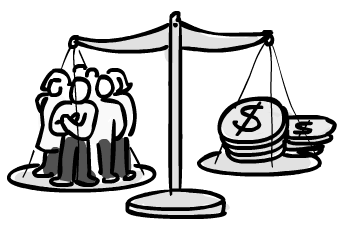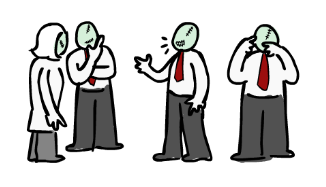 Communications with your customer(s) and team(s) is key to your success. Knowing what they want is just as important as what you plan to deliver. I laughed out loud (uncomfortably) when I saw the graphic to the left. Though I'm not Jewish, I've worked with a lot of people from around the world. I've grown to appreciate the things that make us all unique. Trying to sell some Jews a ham on Chanukah is almost as bad as offering an all-you-can-eat meat buffet to a vegetarian. It doesn't matter how good of a deal you can offer, the product itself must meet the needs (and wants) of the customer. Perhaps if the vendor of the boneless smoked ham had the list below, they could have avoided this embarrassing (and potentially costly) situation.
Problem Statement
Communications with your customer(s) and team(s) is key to your success. Knowing what they want is just as important as what you plan to deliver. I laughed out loud (uncomfortably) when I saw the graphic to the left. Though I'm not Jewish, I've worked with a lot of people from around the world. I've grown to appreciate the things that make us all unique. Trying to sell some Jews a ham on Chanukah is almost as bad as offering an all-you-can-eat meat buffet to a vegetarian. It doesn't matter how good of a deal you can offer, the product itself must meet the needs (and wants) of the customer. Perhaps if the vendor of the boneless smoked ham had the list below, they could have avoided this embarrassing (and potentially costly) situation.
Problem Statement
Describe the business reason(s) for initiating the project or building a product, specifically stating the business problem. Identify the high level goal it relates to.
Description
Describe the approach the project or product will use to address the business problem.
Goals and Objectives
Describe the business goals and objectives of the project or product. (I like user stories)
Scope
Describe the project or product scope. The scope defines limits and identifies what is delivered (inclusive). The scope establishes boundaries and should describe products and/or services that are outside of the scope (exclusive).
Critical Success Factors (Acceptance Criteria)
Describe the factors or characteristics that are deemed critical to the success of a project or product, such that, in their absence the it will fail.
Assumptions
Describe any assumptions related to business, technology, resources, scope, expectations, or schedules.
Constraints
Describe any constraints being imposed in areas such as schedule, budget, resources, products to be reused, technology to be employed, products to be acquired, and interfaces to other products. List the constraints based on the current knowledge today.
I want to thank my wife for sending me the image.

 I was in a contract negotiations meeting for several hours yesterday. The most notable quote came after the customer was asking for the basis of estimates for the scope of work being proposed.
I think both the vendor and customer could have done a lot better if they had just valued
I was in a contract negotiations meeting for several hours yesterday. The most notable quote came after the customer was asking for the basis of estimates for the scope of work being proposed.
I think both the vendor and customer could have done a lot better if they had just valued 



 Our second to last communications choice is telephone. Yes, telephone. It's a little better than email. At least you can sense emotion if you're listening closely. When communicating, use the senses you have available to get indirect feedback. Try smiling when you talk on the telephone. I bet the other person will know you are. I know telephone calls can really dirupt you flow of work but it's better than someone showing up at your desk unannounced. Timing of communications is almost as import as the method used. Try to plan your telephone calls. Voicemail is nothing more than audio email, as far as I'm concerned. Make sure you leave your name and telephone at the beginning of the voicemail (and end). Explain why you are calling. Don't just say you'll just call back. Voicemails are fragmented and can easily be taken out of context, if the relevant information is not included.
Our second to last communications choice is telephone. Yes, telephone. It's a little better than email. At least you can sense emotion if you're listening closely. When communicating, use the senses you have available to get indirect feedback. Try smiling when you talk on the telephone. I bet the other person will know you are. I know telephone calls can really dirupt you flow of work but it's better than someone showing up at your desk unannounced. Timing of communications is almost as import as the method used. Try to plan your telephone calls. Voicemail is nothing more than audio email, as far as I'm concerned. Make sure you leave your name and telephone at the beginning of the voicemail (and end). Explain why you are calling. Don't just say you'll just call back. Voicemails are fragmented and can easily be taken out of context, if the relevant information is not included.




